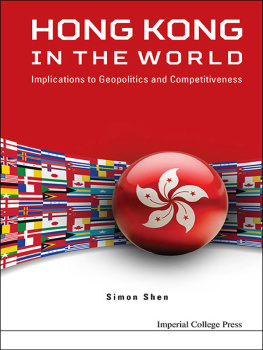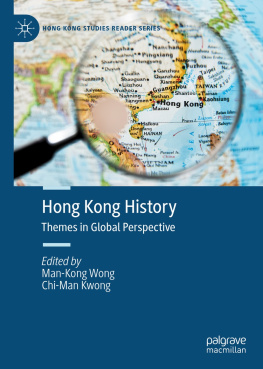Public Service in a Globalized World
To the Trainers of CSTDI and LBSNAA
First published 2004 by Ashgate Publishing
Reissued 2018 by Routledge
2 Park Square, Milton Park, Abingdon, Oxon OX14 4RN
711 Third Avenue, New York, NY 10017, USA
Routledge is an imprint of the Taylor & Francis Group, an informa business
Ahmed Shafiqul Huque and Lina Vyas 2004
Ahmed Shafiqul Huque and Lina Vyas have asserted their right under the Copyright, Designs and Patents Act, 1988, to be identified as the authors of this work.
All rights reserved. No part of this book may be reprinted or reproduced or utilised in any form or by any electronic, mechanical, or other means, now known or hereafter invented, including photocopying and recording, or in any information storage or retrieval system, without permission in writing from the publishers.
A Library of Congress record exists under LC control number: 2004017610
Notice:
Product or corporate names may be trademarks or registered trademarks, and are used only for identification and explanation without intent to infringe.
Publishers Note
The publisher has gone to great lengths to ensure the quality of this reprint but points out that some imperfections in the original copies may be apparent.
Disclaimer
The publisher has made every effort to trace copyright holders and welcomes correspondence from those they have been unable to contact.
ISBN 13: 978-0-815-39128-9 (hbk)
ISBN 13: 978-1-351-15092-7 (ebk)
Good governance has become an essential precondition for the survival, operation and progress of modern states, and one of the key ingredients for an efficient and effective public service. Generally, officials are recruited on the basis of open competitive examinations that test their merit and public service receives the benefit of the best and the brightest talent available in the country. This advantage can only be sustained by a continuous process of updating and upgrading the knowledge and skills of public service employees. Most governments rely on central training institutes to perform these tasks. Thus, training for public services occupies a critical place in the operation of modern governments, and central training institutes have the responsibility of sustaining the quality of public services.
The task has become more challenging with the advent of globalization, which has exerted a converging pressure on countries to adopt similar structural adjustments and administrative reforms to operate according to standard rules and procedures applicable across countries. A natural consequence has been a tendency for training programs to concentrate on those areas ranked high on the list of priorities of internationally powerful actors, at the expense of knowledge and skills essential for serving the public in the country and solving local problems. This book examines the operation and performance of central training institutes in India and Hong and finds that the centralized approach may become less and less relevant, as specialization and problem based decisions become critical.
Central training institutions provide the lead and set the agenda for ensuring a constant supply of competent public officials in most countries. While central training institutes have the potential of catering to the needs of diverse groups in the public service, weaknesses in the structures and evaluation systems have affected their performance. This argument is substantiated through the presentation of detailed information on the central training institutes in India and Hong Kong, analysis of the changes experienced by them, and examination of the strategies employed for coping with the changing circumstances. The study is based on extensive field research conducted in India and Hong Kong. An examination of their publications and interviews with trainers and trainees indicate that although the two institutes operate in radically different circumstances, their objectives and priorities are similar in nature. Both institutes are striving to attain competitive advantage in a world of open markets, free movement of people, skills and capital and harmonization of practices of public administration.
The study deserves attention for several reasons. Public administration in changing societies has often been affected by the dearth of capable administrators and it is worthwhile to examine the process of enhancing capability through training. The role of central training institutes in performing this task has not been examined on a wide scale. And the findings are expected to generate debates as well as provide suggestions for further research in this important area.
We are grateful to several institutions and individuals for encouragement, assistance and support received in the course of this study. The Department of Public and Social Administration at the City University of Hong Kong has been a constant source of support throughout the duration of the study, while the Institute on Globalization and the Human Condition at McMaster University provided invaluable assistance at the writing stage. We would also like to acknowledge extremely helpful cooperation received from the Lai Bahadur Shastri National Academy for Administration, India and the Civil Service Training and Development Institute, Hong Kong. Staff, trainers and trainees at these two training institutes deserve much of the credit for facilitating our understanding of the challenges in public service training.
Among individuals, there are many who have extended help through advice, encouragement, comments and criticism of earlier drafts. B. S. Baswan, Director of the Lai Bahadur Shastri National Academy for Administration provided invaluable support and logistical help in the collection of data in India. Patricia Tam, Senior Training Officer of the Civil Service Training and Development Institute in Hong Kong was a key contact and generously gave her time and advice. Our friends and colleagues in the academic world have contributed in various ways. We must express our gratitude to Muhammad Yeahia Akhter, Brian Brewer, Will Coleman, Arie Halachmi, Ian Holliday, Randhir Jain, Jermain Lam, Joshua Mok, Martin Painter, and Habib Zafarullah. We would like to register our gratitude to the referees who evaluated the manuscript for Ashgate Publishing Group. Special thanks are also due to Kirstin Howgate, Senior Commissioning Editor, Ashgate, for bringing this project to fruition. We are grateful to Carolyn Veldstra for editorial help.
Finally, we would like to thank our spouses Yasmin and Anand, and register our appreciation for our children Shineen, Ariqa and Aqun. Their support and understanding went a long way in keeping our spirits high. With all the help, cooperation and advice, we remain responsible for any shortcomings in the book.
July 2004
Ahmed Shafiqul Huque
Lina Vyas
Chapter 1
Introduction
Globalization has ushered in societal, political, and cultural changes of great magnitude and its impact is becoming increasingly obvious. In this context, good governance has become an essential precondition for the survival, operation and progress of modern states. In order for modern states to operate effectively, training for public service personnel is critical. Public sector employees must be knowledgeable, skilful, compassionate, and be able to make sound decisions and implement them.
Traditionally, the scope of training for public service was somewhat limited. The nature of daily activities did not change often, and academic preparation, combined with standardized training through government facilities, were considered adequate for most officials. Furthermore, it has typically been assumed that the objectives, approach, content and direction of training, and the operation of training institutes would be determined based on the features, requirements and agenda of a particular country. Two completely different cases such as India and Hong Kongthe two main examples in this bookwould be expected to have strikingly different arrangements for training personnel in the public service. One of the only things these places ostensibly share is a history of British colonial rule. However, as the effects of globalization become more extensive, the activities of public servants are becoming more diverse and complex, and there have been radical changes in the nature, approach, methods and implications of public service training. In response to these changes, many countries are moving toward more centralized training, and the emphasis in training has shifted to common areas.










